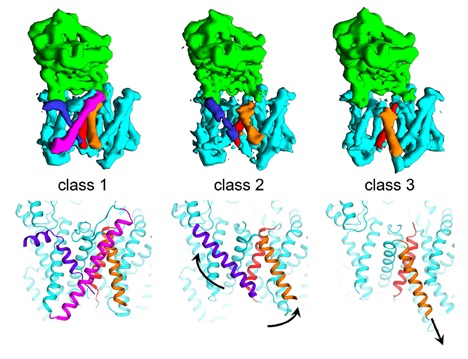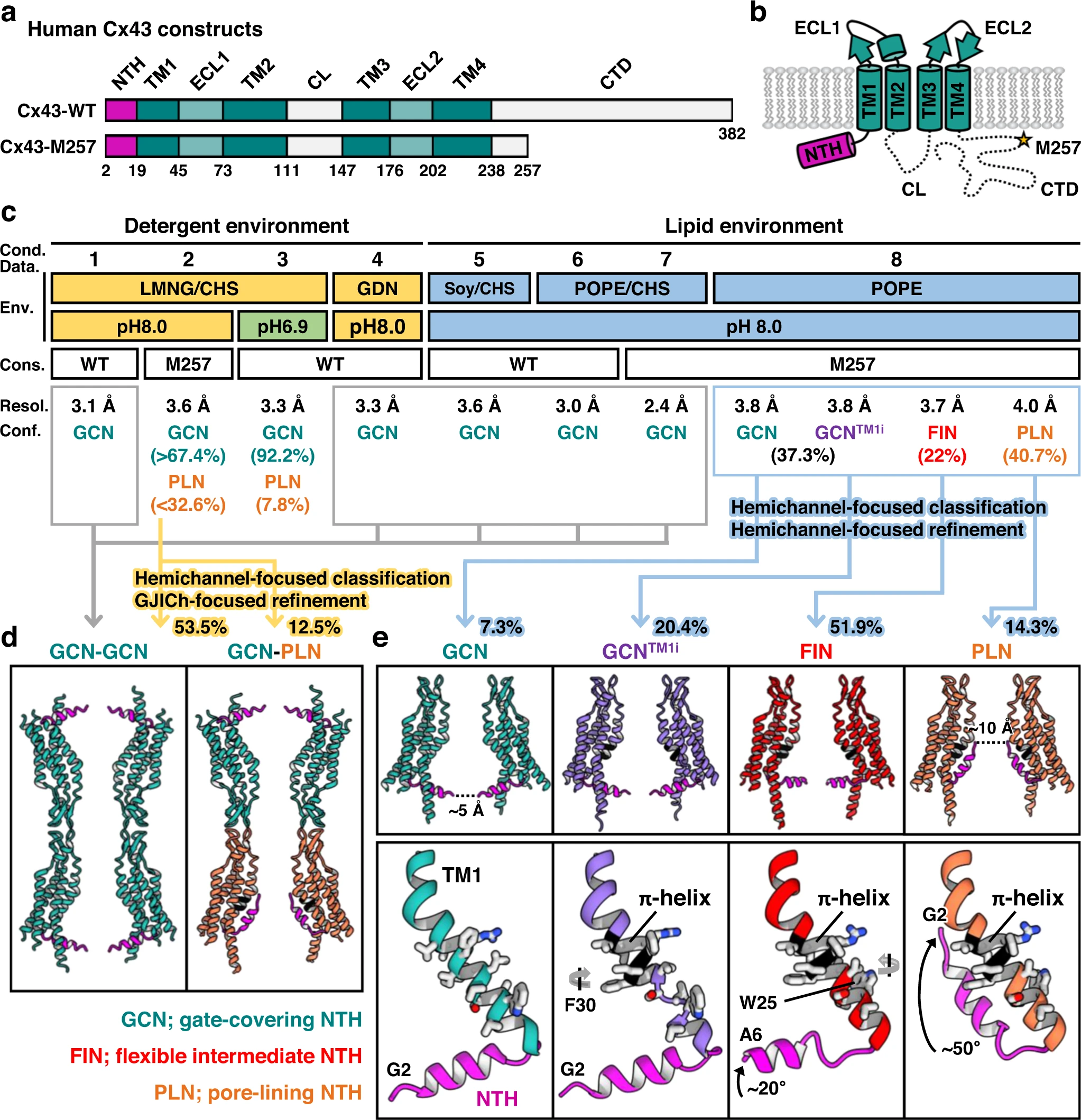Dynamic Conformational Change and Function Identification Service
Dynamic Conformational Change and Function Identification Service based on Cryo-EM (cryo-electron microscopy) is designed to systematically analyze the dynamic conformational changes of biological macromolecules under different functional states, accurately identify key functional states, and elucidate the corresponding molecular mechanisms. This service is widely applicable to basic scientific research, mechanism elucidation, drug target discovery and validation, and structure-based drug design (SBDD).
Biological macromolecules (such as proteins, nucleic acids, and their complexes) often undergo complex conformational changes while performing biological functions, such as receptor activation triggered by ligand binding, structural rearrangements during enzymatic catalysis, and conformational switching of ion channel gating. These dynamic processes not only determine the functional states of the molecules but are also directly related to the precision of biological signal regulation, energy conversion, and cellular responses. Systematically capturing and analyzing these dynamic processes is of great importance for understanding molecular mechanisms, identifying regulatory sites, and developing targeted therapeutics.

Palamini M. et al. Front Mol Biosci. 2016.
Traditional structural biology techniques can provide static structural information but are limited in their ability to systematically capture the dynamic changes of macromolecules. Cryo-EM enables systematic analysis of the conformational heterogeneity and dynamic transitions of biological macromolecules under near-physiological conditions. Through single-particle analysis (SPA), three-dimensional classification, and continuous flexible modeling, Cryo-EM can capture high-resolution structures of molecules in different functional states, revealing conformational transition pathways and their corresponding free energy landscapes.
Based on the advanced cryo-electron microscopy platform, MtoZ Biolabs provides Dynamic Conformational Change and Function Identification Service which can capture the multi-conformational states of biomacromolecules under near-physiological conditions, analyze their conformational change paths and functional state switching mechanisms, and help researchers deeply understand the dynamic behavior of molecules, accurately annotate functional conformations, and provide a solid structural foundation and decision-making support for mechanism research, SBDD and innovative molecular engineering.
Analysis Workflow
The main workflow of Dynamic Conformational Change and Function Identification Service based on Cryo-EM is as follows:
1. Sample Preparation and Quality Assessment
Optimize buffer systems and sample conditions to ensure good particle dispersion and conformational diversity.
2.Cryo-Grid Preparation and Preliminary Screening
Prepare high-quality cryo-grids and perform initial screening to confirm particle condition and distribution.
3. High-Resolution Cryo-EM Data Acquisition
Use advanced cryo-electron microscopy platforms to collect large amounts of high-quality image data under low-dose conditions.
4. Image Processing and 3D Reconstruction
Perform particle picking, 2D/3D classification, and three-dimensional reconstruction of different functional states.
5. Continuous Flexibility Modeling and Energy Landscape Analysis
Apply principal component analysis (PCA) or continuous heterogeneity modeling to analyze conformational transition pathways and reconstruct the energy landscape.
6. Identification of Key Functional States and Report Delivery
Identify and annotate functionally relevant conformations, delivering density maps, atomic models, conformational pathway maps, and comprehensive functional analysis reports.
Applications
Example applications of the Dynamic Conformational Change and Function Identification Service based on Cryo-EM include:
Receptor Activation Mechanism Elucidation
Capture ligand-induced receptor conformational changes.
Dynamic Study of Enzymatic Catalysis Cycles
Analyze local changes at active sites and overall structural remodeling to understand catalytic processes.
Dynamic Modeling of Signal Transduction Pathways
Reveal the assembly, activation, and dissociation processes of signaling molecular complexes.
Target Conformational Analysis and Drug Design Optimization
Identify potential binding states and regulatory conformations of target proteins to aid small molecule or biologic drug development.
Viral Assembly and Release Mechanism Studies
Resolve the processes of viral capsid assembly, conformational cracking, and membrane fusion mediated by fusion proteins.
FAQ
Q. How does Cryo-EM Capture and Distinguish Multiple Dynamic Conformations?
Cryo-EM captures a large number of single-particle images and uses three-dimensional classification (3D classification) and continuous heterogeneity analysis methods during data processing to distinguish particles in different functional states.
This enables reconstruction of three-dimensional structures corresponding to various conformations, revealing either continuous transition pathways or discrete intermediate states.
Q. Can Cryo-EM Identify Key Functional Conformations Rather Than Just Static Structures?
Yes. By combining conformational landscape analysis and energy landscape mapping, Cryo-EM can not only capture stable end-state structures but also identify intermediate and transition states related to functional activity, systematically revealing key regulatory conformations during dynamic processes.
Case Study
This study used Cryo-EM to perform dynamic conformational change and functional recognition analysis on the human connexin 43 (Cx43/GJA1) gap junction channel (GJICh), capturing and analyzing various function-related conformational states of the channel under different environmental conditions. The study revealed that the Cx43 GJICh protomer has four dynamic conformations (GCN, PLN, FIN and GCNTM1i), and observed a structural transition of the first transmembrane helix (TM1) from an α-helix to a π-helix, leading to the formation of a lateral membrane channel. These conformational changes are regulated by pH, lipid environment and C-terminal truncation, reflecting the dynamic balance mechanism of the channel between open, closed and regulatory states, providing an important structural basis for a deeper understanding of Cx43-mediated intercellular communication and related pathological mechanisms.

Lee HJ. et al. Nat Commun. 2023.
How to order?







